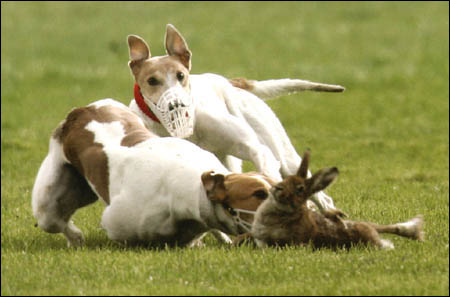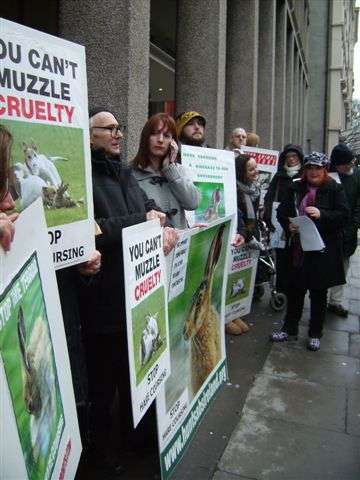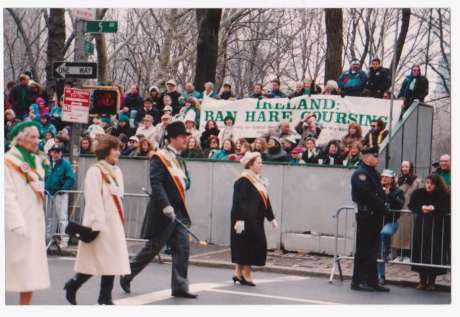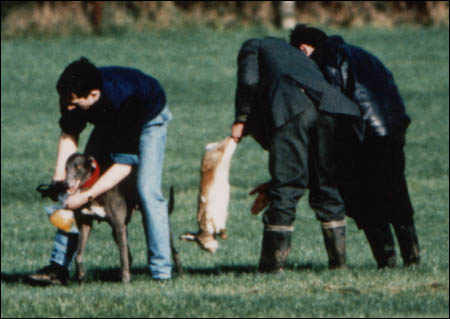 North Korea Increases Aid to Russia, Mos... Tue Nov 19, 2024 12:29 | Marko Marjanovi? North Korea Increases Aid to Russia, Mos... Tue Nov 19, 2024 12:29 | Marko Marjanovi?
 Trump Assembles a War Cabinet Sat Nov 16, 2024 10:29 | Marko Marjanovi? Trump Assembles a War Cabinet Sat Nov 16, 2024 10:29 | Marko Marjanovi?
 Slavgrinder Ramps Up Into Overdrive Tue Nov 12, 2024 10:29 | Marko Marjanovi? Slavgrinder Ramps Up Into Overdrive Tue Nov 12, 2024 10:29 | Marko Marjanovi?
 ?Existential? Culling to Continue on Com... Mon Nov 11, 2024 10:28 | Marko Marjanovi? ?Existential? Culling to Continue on Com... Mon Nov 11, 2024 10:28 | Marko Marjanovi?
 US to Deploy Military Contractors to Ukr... Sun Nov 10, 2024 02:37 | Field Empty US to Deploy Military Contractors to Ukr... Sun Nov 10, 2024 02:37 | Field Empty Anti-Empire >>
Indymedia Ireland is a volunteer-run non-commercial open publishing website for local and international news, opinion & analysis, press releases and events. Its main objective is to enable the public to participate in reporting and analysis of the news and other important events and aspects of our daily lives and thereby give a voice to people.
 Fraud and mismanagement at University College Cork Thu Aug 28, 2025 18:30 | Calli Morganite Fraud and mismanagement at University College Cork Thu Aug 28, 2025 18:30 | Calli Morganite
UCC has paid huge sums to a criminal professor
This story is not for republication. I bear responsibility for the things I write. I have read the guidelines and understand that I must not write anything untrue, and I won't.
This is a public interest story about a complete failure of governance and management at UCC.
 Deliberate Design Flaw In ChatGPT-5 Sun Aug 17, 2025 08:04 | Mind Agent Deliberate Design Flaw In ChatGPT-5 Sun Aug 17, 2025 08:04 | Mind Agent
Socratic Dialog Between ChatGPT-5 and Mind Agent Reveals Fatal and Deliberate 'Design by Construction' Flaw
This design flaw in ChatGPT-5's default epistemic mode subverts what the much touted ChatGPT-5 can do... so long as the flaw is not tickled, any usage should be fine---The epistemological question is: how would anyone in the public, includes you reading this (since no one is all knowing), in an unfamiliar domain know whether or not the flaw has been tickled when seeking information or understanding of a domain without prior knowledge of that domain???!
This analysis is a pretty unique and significant contribution to the space of empirical evaluation of LLMs that exist in AI public world... at least thus far, as far as I am aware! For what it's worth--as if anyone in the ChatGPT universe cares as they pile up on using the "PhD level scholar in your pocket".
According to GPT-5, and according to my tests, this flaw exists in all LLMs... What is revealing is the deduction GPT-5 made: Why ?design choice? starts looking like ?deliberate flaw?.
People are paying $200 a month to not just ChatGPT, but all major LLMs have similar Pro pricing! I bet they, like the normal user of free ChatGPT, stay in LLM's default mode where the flaw manifests itself. As it did in this evaluation.
 AI Reach: Gemini Reasoning Question of God Sat Aug 02, 2025 20:00 | Mind Agent AI Reach: Gemini Reasoning Question of God Sat Aug 02, 2025 20:00 | Mind Agent
Evaluating Semantic Reasoning Capability of AI Chatbot on Ontologically Deep Abstract (bias neutral) Thought
I have been evaluating AI Chatbot agents for their epistemic limits over the past two months, and have tested all major AI Agents, ChatGPT, Grok, Claude, Perplexity, and DeepSeek, for their epistemic limits and their negative impact as information gate-keepers.... Today I decided to test for how AI could be the boon for humanity in other positive areas, such as in completely abstract realms, such as metaphysical thought. Meaning, I wanted to test the LLMs for Positives beyond what most researchers benchmark these for, or have expressed in the approx. 2500 Turing tests in Humanity?s Last Exam.. And I chose as my first candidate, Google DeepMind's Gemini as I had not evaluated it before on anything.
 Israeli Human Rights Group B'Tselem finally Admits It is Genocide releasing Our Genocide report Fri Aug 01, 2025 23:54 | 1 of indy Israeli Human Rights Group B'Tselem finally Admits It is Genocide releasing Our Genocide report Fri Aug 01, 2025 23:54 | 1 of indy
We have all known it for over 2 years that it is a genocide in Gaza
Israeli human rights group B'Tselem has finally admitted what everyone else outside Israel has known for two years is that the Israeli state is carrying out a genocide in Gaza
Western governments like the USA are complicit in it as they have been supplying the huge bombs and missiles used by Israel and dropped on innocent civilians in Gaza. One phone call from the USA regime could have ended it at any point. However many other countries are complicity with their tacit approval and neighboring Arab countries have been pretty spinless too in their support
With the release of this report titled: Our Genocide -there is a good chance this will make it okay for more people within Israel itself to speak out and do something about it despite the fact that many there are actually in support of the Gaza
 China?s CITY WIDE CASH SEIZURES Begin ? ATMs Frozen, Digital Yuan FORCED Overnight Wed Jul 30, 2025 21:40 | 1 of indy China?s CITY WIDE CASH SEIZURES Begin ? ATMs Frozen, Digital Yuan FORCED Overnight Wed Jul 30, 2025 21:40 | 1 of indy
This story is unverified but it is very instructive of what will happen when cash is removed
THIS STORY IS UNVERIFIED BUT PLEASE WATCH THE VIDEO OR READ THE TRANSCRIPT AS IT GIVES AN VERY GOOD IDEA OF WHAT A CASHLESS SOCIETY WILL LOOK LIKE. And it ain't pretty
A single video report has come out of China claiming China's biggest cities are now cashless, not by choice, but by force. The report goes on to claim ATMs have gone dark, vaults are being emptied. And overnight (July 20 into 21), the digital yuan is the only currency allowed. The Saker >>
Interested in maladministration. Estd. 2005
 RTEs Sarah McInerney ? Fianna Fail?supporter? Anthony RTEs Sarah McInerney ? Fianna Fail?supporter? Anthony
 Joe Duffy is dishonest and untrustworthy Anthony Joe Duffy is dishonest and untrustworthy Anthony
 Robert Watt complaint: Time for decision by SIPO Anthony Robert Watt complaint: Time for decision by SIPO Anthony
 RTE in breach of its own editorial principles Anthony RTE in breach of its own editorial principles Anthony
 Waiting for SIPO Anthony Waiting for SIPO Anthony Public Inquiry >>
Voltaire, international edition
 Will intergovernmental institutions withstand the end of the "American Empire"?,... Sat Apr 05, 2025 07:15 | en Will intergovernmental institutions withstand the end of the "American Empire"?,... Sat Apr 05, 2025 07:15 | en
 Voltaire, International Newsletter N?127 Sat Apr 05, 2025 06:38 | en Voltaire, International Newsletter N?127 Sat Apr 05, 2025 06:38 | en
 Disintegration of Western democracy begins in France Sat Apr 05, 2025 06:00 | en Disintegration of Western democracy begins in France Sat Apr 05, 2025 06:00 | en
 Voltaire, International Newsletter N?126 Fri Mar 28, 2025 11:39 | en Voltaire, International Newsletter N?126 Fri Mar 28, 2025 11:39 | en
 The International Conference on Combating Anti-Semitism by Amichai Chikli and Na... Fri Mar 28, 2025 11:31 | en The International Conference on Combating Anti-Semitism by Amichai Chikli and Na... Fri Mar 28, 2025 11:31 | en Voltaire Network >>
|
Evidence mounting that hare coursing cruel beyond measure
 international |
animal rights |
opinion/analysis international |
animal rights |
opinion/analysis
 Saturday February 25, 2012 00:53 Saturday February 25, 2012 00:53 by Ban Hare Coursing Now by Ban Hare Coursing Now

Evidence is mounting recent weeks that hare coursing can no longer ward off accusations of deliberate cruelty and ecological vandalism. Opposition to it is increasing, with a former district court judge and the prestigious Irish Wildlife Trust caoming out in favour of its abolition.
 Hare Coursing: A former judge and a respected conservationist group now say it should be banned As Deputies Clare Daly and Maureen O' Sullivan prepare to move a Bill aimed at banning hare coursing, the campaign against this cruel so-called "sport" is gathering momentum.
A few days ago, a retired district court judge publicly called for a ban on the practise. And the previous week the Irish Wildlife Trust denounced hare coursing on both animal welfare AND conservationist grounds, expressing support for the upcoming Bill.
Mr. Michael Pattwell, who served as a judge for 21 years in Cork, Tipperary, and Waterford, retired last June and now writes a column for the Cork Evening Echo. In this week’s piece, he writes a lengthy article in which he describes hare coursing as “the legal torture of poor timid creatures” and calls for its abolition. He condemns all stages of the activity…the netting and handling of hares by coursing clubs, the confinement of the animals in captivity, and the terror and cruelty of the coursing event itself.
Following is the text of this week’s article in the Cork Evening Echo in which former District Court Judge Michael Patwell speaks out against hare coursing:
"Pattwell's Verdict"
Evening Echo, February 21st 2012
We are but a week away from the end of the hare-coursing season. Unfortunately for the poor hares we are in a Leap Year, which means that the legal torture of these poor timid creatures can go on for a day longer than in other years. The Irish hare is a protected species under The Wildlife Act, 1976 but is classified as a game species and may therefore be trapped or sold under license during the open season (end of September to the end of February). The license must be obtained from the National Parks and Wildlife Service and it usually allows for the netting by each club of about 75 hares. After the coursing event, the hares are supposed to be transported back to where they were netted and re-released into the wild. Yet one hears reports of hares, having survived a coursing meeting, being passed on to another club to be used again.
In 1993, the government, responding to public concern over the cruel killing of hares during coursing meetings and under political pressure, required the Irish Coursing Club (who control the sport) to change the rules to require that greyhounds are muzzled at enclosed coursing meetings. To be facetious for a moment, nobody figured out how to tell the hares that the dogs are muzzled. Greyhounds used in open coursing still, however, remain unmuzzled.
Remember the Lisbon Treaty? You know, the one we voted to reject but not being satisfied with the result the Government ran the referendum again. Anti blood sport campaigners and animal lovers generally, if they had read Article 13 of The Lisbon treaty, could, initially, have been quite overjoyed, until, that is, they read the sting in the tail. Article 13 reads:
In formulating and implementing the Union's agriculture, fisheries, transport, internal market, research and technological development and space policies, the Union and the Member States shall, since animals are sentient beings, pay full regard to the welfare requirements of animals, while respecting the legislative or administrative provisions and customs of the Member States relating in particular to religious rites, cultural traditions and regional heritage. The saving words for coursing fans are, of course, ….respecting the..cultural traditions of the Member States.
There is no doubt that coursing is a cultural tradition. Arrian, the Greek philosopher, wrote the oldest documented description of hare coursing about the year 180 AD. That certainly establishes the antiquity and heredity of the sport. Since 180 AD, however, very many other practices, common then, have been regulated and banned as human beings evolved and civilisation progressed. We don't cut the heads off convicted criminals anymore; slavery has been legally abolished (whether factually so is another matter); we don't send little children up chimneys to clean them anymore; women can no longer be regarded as chattels. Yet a poor timid animal can still be taken out of its habitat, confined, hunted, terrified and often brutally killed because it has been done for 2,000 years. It seems to me that civilisation still has a way to go.
There are between seventy-five and eighty coursing clubs in Ireland. In the weeks before each meeting, members of the clubs go into the countryside to collect hares in a process known as "netting". This involves shouting, yelling and making loud noises to herd hares into nets that have been strategically placed. The hares are then put into boxes for transport to the coursing venue. This netting and handling is cruel in itself and often results in these timid and delicate creatures dying or suffering severe injury.
The hares then have to be trained. Releasing a wild animal into a coursing field would produce, what coursing supporters would see as, very poor "sport" because the hare wouldn't know where to run. Before the coursing event, therefore, they are put through training sessions to get them familiar with the field and to teach them to run up the centre in order to provide "good coursing".
During these training weeks the hares are kept herded together in an enclosure. This adds considerably to the stress suffered by them. Being naturally solitary creatures, in captivity they are very prone to disease, which can spread more easily when they are kept together in an enclosure.
The coursing field is typically about 370 metres (400 yards) long. A hare is released from one end and given a 90m start before the greyhounds are released to pursue it up the field to the "escapes" at the far end. Typically the dogs catch up with the hare about 50m from the escapes. The first dog to turn the hare wins.
The objective of coursing is to test and judge the athletic ability of the dogs rather than to kill the hare which, being a very agile creature, weaves, turns and dodges skilfully to avoid them. Greyhounds are much bigger and faster. A hare is usually about 3.5 kg in weight whilst a greyhound can be between 30 and 40 kg. With two dogs chasing one hare, the hare is a mere one twentieth of the size of the combined size of the chasing dogs. A hare can reach speeds of up to 40 - 45 km/h. At maximum acceleration, a greyhound reaches a full speed of 70 km/h (within 30 metres from release,) travelling at almost 20 metres per second for the first 250 metres of a race. With odds like those the wonder is that so many hares do make it to the 'escapes".
Thankfully its agility gives the hare an important and often crucial advantage as it seeks, usually successfully, to escape. During the course, however, the hare is literally fighting for its life. Even though the dogs are muzzled, they still can kill the hare by mauling it into the ground or tossing its delicate body into the air. In fact, this often happens.
I have seen a report that suggests that during the course of a coursing season at least 400 hares are killed or so seriously injured that they have to be put down. That figure may be anti-blood-sport propaganda. When I enquired the Irish Coursing Club said, "In the 2010/11 season 5734 hares were captured for the purpose of Park Coursing and 5671 of these were released back into the wild, under the supervision of officers from the National Parks & Wildlife. Of the 63 hares that did not make it, some would have died of natural causes whilst in captivity, some would have been hit by the greyhounds and a decision was made to put them down and a few would have been killed outright."
The national coursing meeting in Clonmel is considered the most important event in the coursing calendar. It is said to attract up to 10,000 spectators and is claimed by its organisers to be worth many millions for the local economy.
At least Article 13 of The Lisbon Treaty, which effectively means our Constitution, recognises that animals are "sentient beings". The best meaning for the word 'sentient' I could find is 'having the power of perception by the senses', that is, be able to perceive or feel things. Nothing but words! Entirely meaningless to the poor creature dying a horrible death so that a few humans, supposed to be sentient creatures too, can have a few moments of sport.
Whether it is 400 or 50, or some number in between, it is too many. Remember too all the hares that survive despite having been terrified and tortured in a most cruel way, all in the name of sport.
…..End of text of article from Cork Evening Echo…..
And the Irish Wildlife Trust was equally forthright in its opposition to hare coursing. Following is the text of the IWT statement as it appears on the official IWT website (the link to this is included at the end of the statement):
The IWT wishes to express its support for a proposed Bill that would outlaw hare coursing in Ireland. The Dáil should follow in the footsteps of the Northern Ireland Assembly which banned this cruel and barbaric practice in 2010. It was banned in Scotland in 2002 and in England and Wales in 2005 – Ireland is an outlier country in terms of its attitude to animal welfare and conservation of its native wildlife.
The Irish hare is an endemic sub-species to this island, in other words it is found nowhere else in the world. Based on recent surveys the National Parks and Wildlife Service assessed its conservation status as of ‘least concern’ with a population that is “stable but with population fluctuations” (1). It found that the estimated population of Irish hare was 233,000 in 2006 but nearly twice that, at 535,000 only one year later. A Species Action Plan for the Irish hare, published by the same organisation, states that “populations are thought to have undergone a substantial decline in the past 15-25 years” while “populations have fallen to critical levels in some areas”. This document lists the “unsustainable taking of hares for sporting purposes” as one of the current factors leading to the loss or decline of this species (2).
Research into the impacts on hare coursing in Ireland has shown that while the direct mortality of hares during events has fallen to about 4%, the wider impacts to hares are unknown (3, 4).
Aside from the conservation of this unique animal the IWT believes that chasing hares for amusement constitutes barbaric treatment of our native wildlife.
The Irish hare is protected under the Wildlife Act 1976 (as Amended) 2000 and Annex IV of the EU’s Habitats Directive, which states that any taking from the wild should be subject to management measures.
As hares can breed at any time of the year it is likely that when hares are taken for coursing leverets (young hares) are left to starve. The IWT believes that our natural heritage should be cherished and respected. A practice which harasses and exhausts animals which have been taken from their natural surroundings, and in the name of entertainment, should have no place in a modern society.
(1) Marnell, F., Kingston, N. & Looney, D. (2009) Ireland Red List No. 3: Terrestrial Mammals, National Parks and Wildlife Service, Department of the Environment, Heritage and Local Government, Dublin, Ireland.
(2) Department of Environment, Heritage & Local Government and the Environment & Heritage Service. (2005). All Ireland Species Action Plans Irish Lady’s-tresses Spiranthes romanzoffiana; Pollan Coregonus autumnalis; Hare Lepus timidus hibernicus; Corncrake Crex crex.
(3) Reid N, McDonald, R.A. & Montgomery W.I. (2007). Factors associated with hare mortality during coursing. Animal Welfare 2007, 16: 427-434
(4) Reid N., Magee C. & Montgomery W.I. Integrating field sports, hare population management and conservation. Acta Theriologic
http://iwt.ie/2012/02/iwt-calls-for-an-end-to-hare-cour...sing/

Protesters including Deputy Clare Daly (Socialist Party) calling for a coursing ban

An anti hare coursing demo at the 1994 New York St Patrick's Day parade

A dead coursing hare is removed after greyhounds have mauled it to death
|
 international |
animal rights |
opinion/analysis
international |
animal rights |
opinion/analysis
 Saturday February 25, 2012 00:53
Saturday February 25, 2012 00:53 by Ban Hare Coursing Now
by Ban Hare Coursing Now





























 printable version
printable version

 Digg this
Digg this del.icio.us
del.icio.us Furl
Furl Reddit
Reddit Technorati
Technorati Facebook
Facebook Gab
Gab Twitter
Twitter
View Comments Titles Only
save preference
Comments (1 of 1)
Jump To Comment: 1Fingers crossed that parties will, just this once, allow a free vote on the Bill to ban hare coursing. It's great to see that ex judge back the move to get rid of this sick pastime. The hare is such a harmless animal. My grandmother used to have three hares in her garden, she used to feed them.
This protest was outside the Aer Lingus office in New York